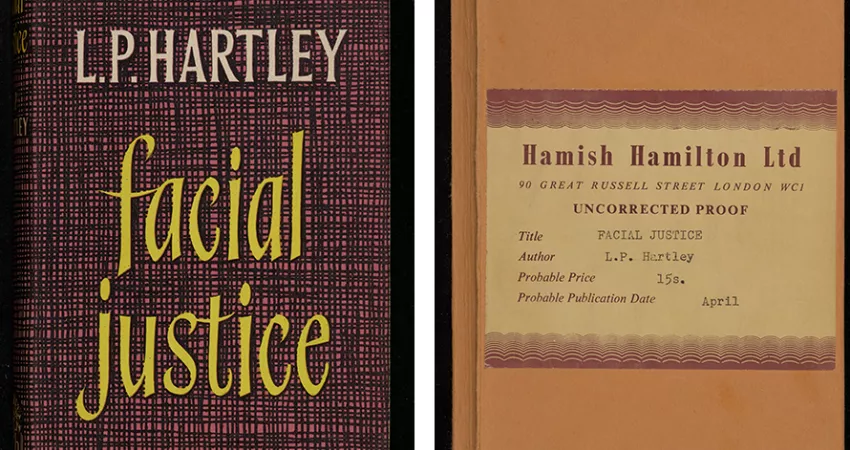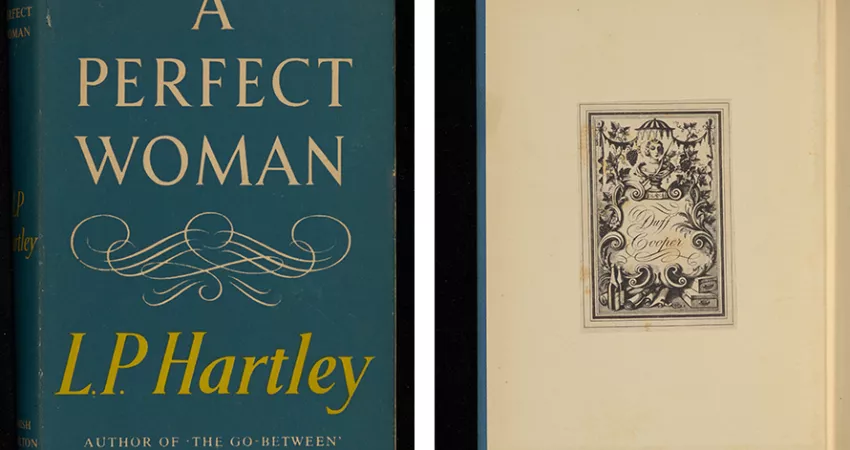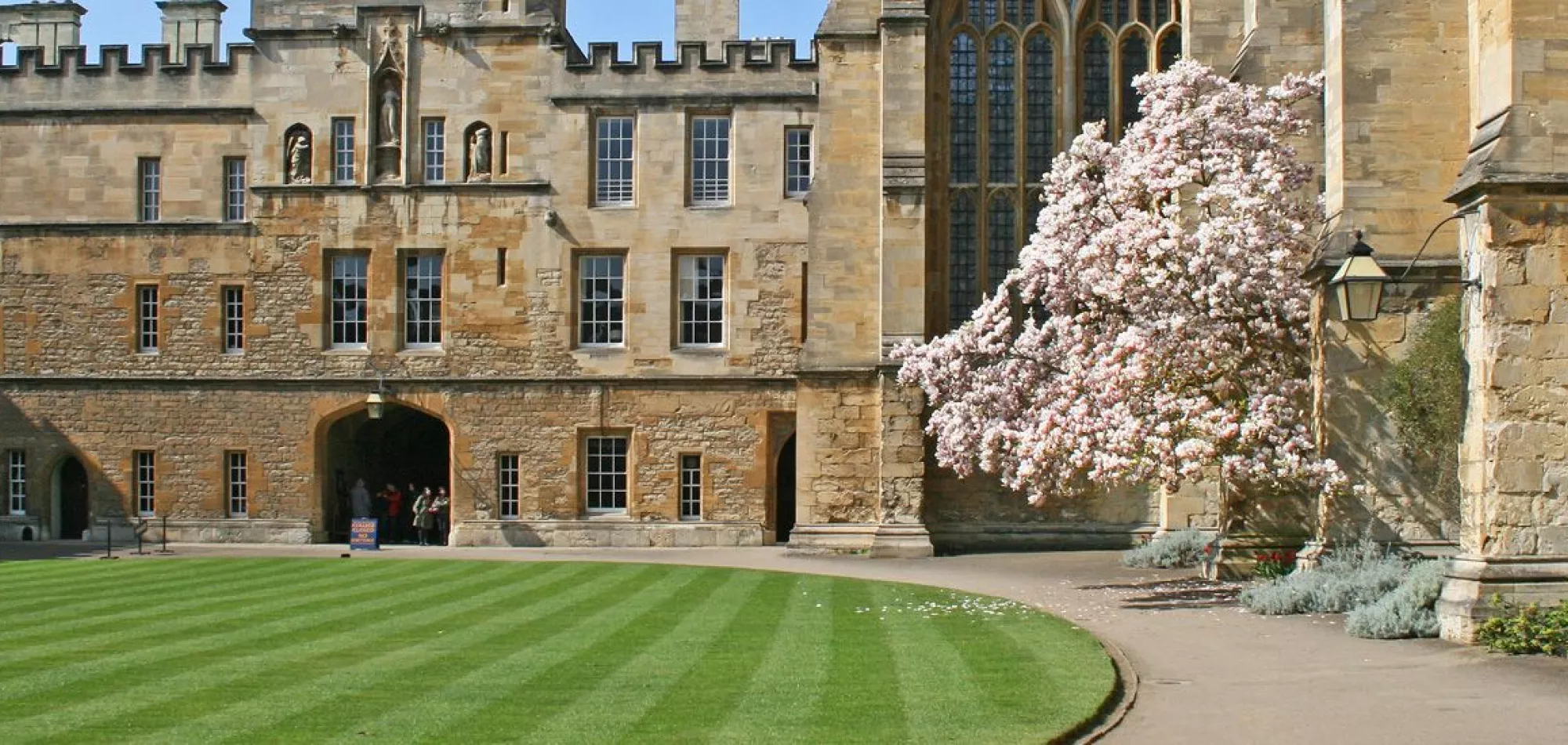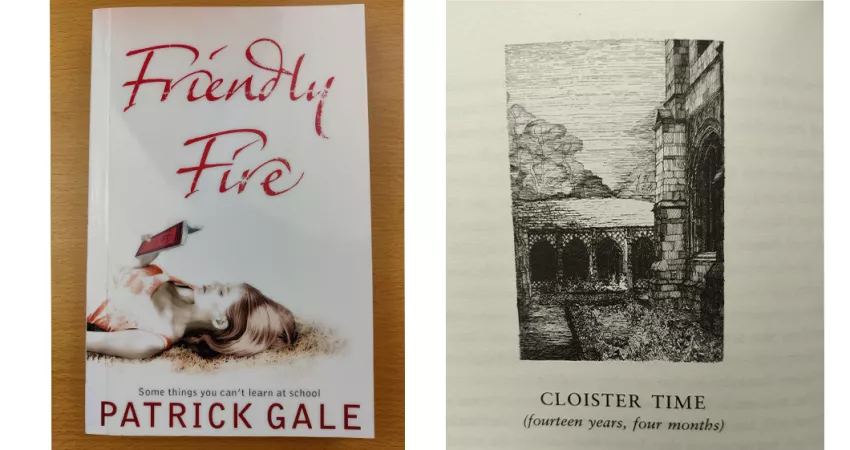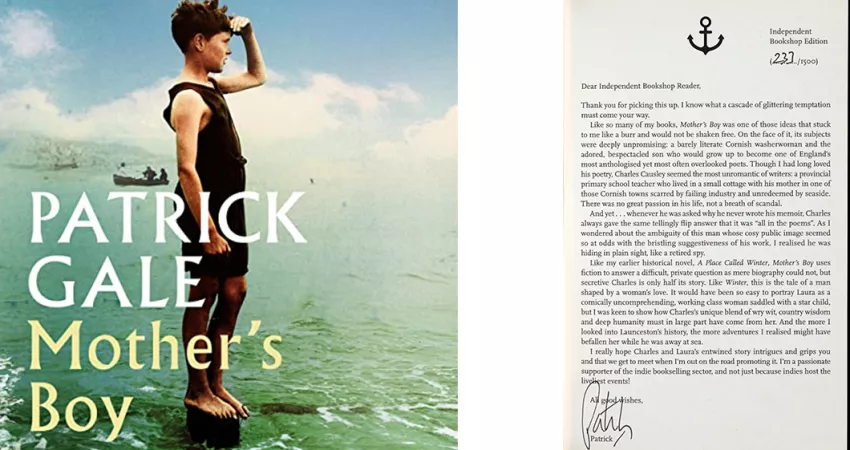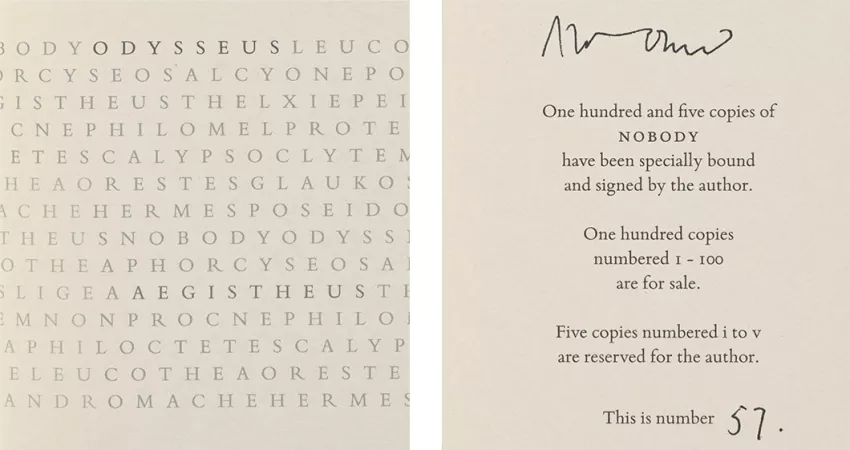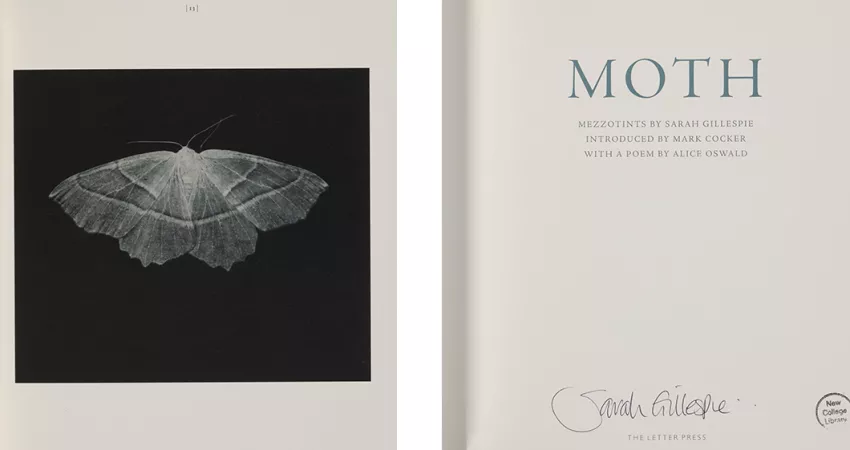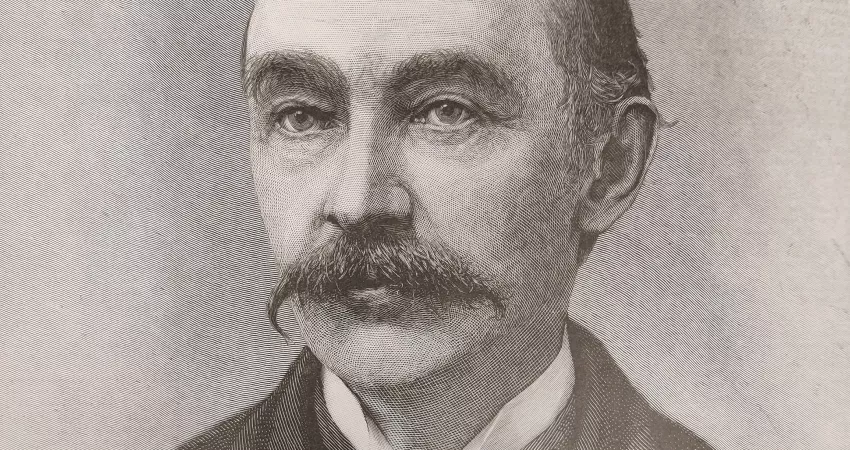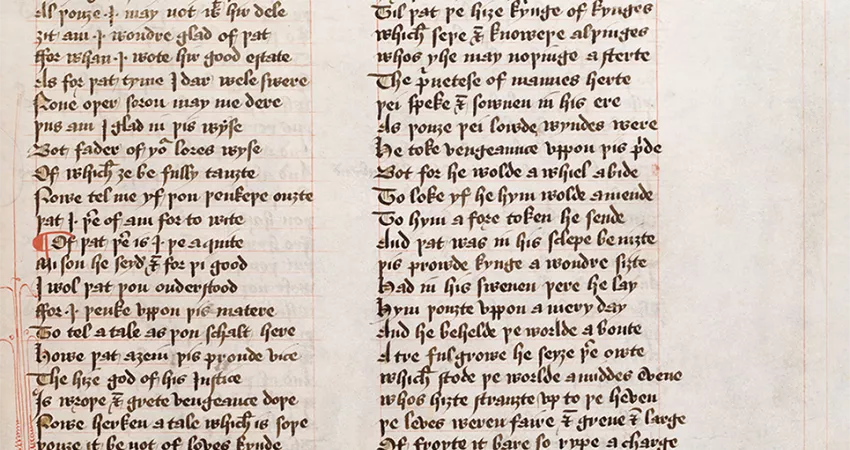We now come to some of the most recent works of English Literature in our collections.
This final section covers the shortest amount of years, but a large amount of history. The twentieth century saw both devastation and cooperation on a level never seen before. It was a century of the horror of two world wars, but also one that ended with the establishment of a new global order, and a Britain with a very different place in the world.
Literature produced throughout this period was, naturally, ever changing, both reacting to and reflecting on contemporary events. A notoriously complex period of English literature—one that many commentators have argued is difficult to define—this section, by necessity, limits its scope, first highlighting some key works from this period in our collections. To end the exhibition, we then highlight some twentieth-century and modern works with a distinct Oxford connection, showcasing New College’s own contribution to English Literature in recent decades.
One of the greatest literary inventions of the twentieth century was the modernist novel—a revolutionary new form of writing that deliberately made a break with the past. Perhaps the most famous modernist author in England was Virginia Woolf (1882–1941), who helped to popularise this new form of novel. In works such as To the Lighthouse, she developed the use of stream of consciousness as a literary device and, in Mrs Dalloway, she used modernist techniques to investigate the horrors of the First World War.
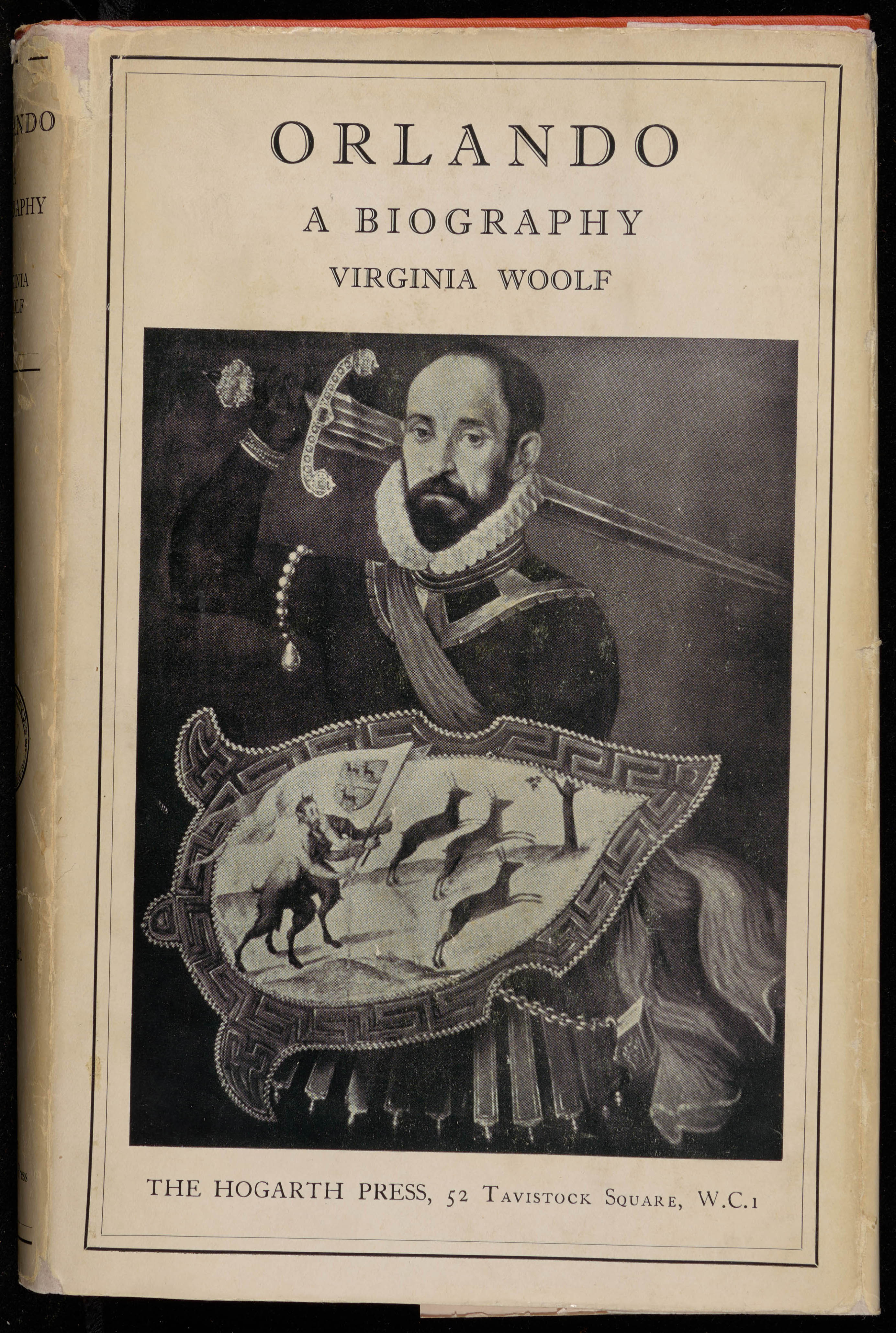
Above, you can see New College Library’s copy of another of her works—Orlando, complete with its original dust jacket. Written at the height of Woolf’s literary career, it is without doubt a key work of modernist literature in the library's collections, one that deliberately and self-consciously broke with traditional ways of writing.
A key work of queer literature, Orlando describes the adventures of a poet who changes sex from male to female, and lives for centuries. Although intended to be a satire of both English literature and the aristocracy, it was, in reality, an important piece of literary innovation. By describing a heroine who becomes a hero, it not only explored but also subverted the rigidly defined traditional gender roles of early twentieth-century Britain.
Based on a queer love story, it is also an important work of early lesbian literature. The real-life inspiration for the title-character was Woolf’s close friend and love, Vita Sackville West (1892–1962). In her diary, Woolf wrote that Orlando was to be ‘Vita, one with a change from one sex to another’. In many ways a very modern novel, Orlando celebrates a love that reaches across standard definitions of gender.
This book, though, was also courageous, as another item in New College Library’s collection from this period also reveals. Below, you can see the cover and title-page of The Well of Loneliness, written by Radclyffe Hall (1880–1943) and published in 1928—the same year as Orlando.
The novel recounts the life of its heroine Stephen Gordon, a character who is clearly based on Radclyffe Hall’s own life story. Spending her childhood as an aristocratic tomboy, as an adult Stephen becomes a war hero, writer, and lover of other women. The only one of Hall’s works to have overtly lesbian themes, it is a novel about the difficulties of being an outsider and rebelling against societal expectations. Click on the dots to discover more:
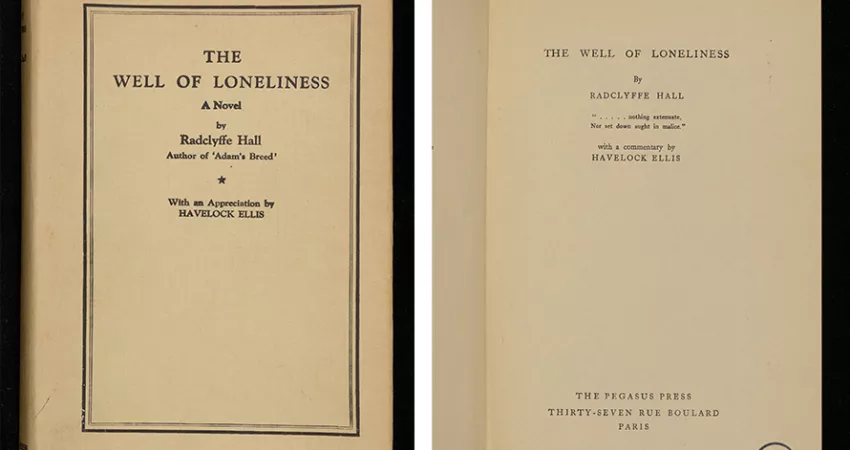
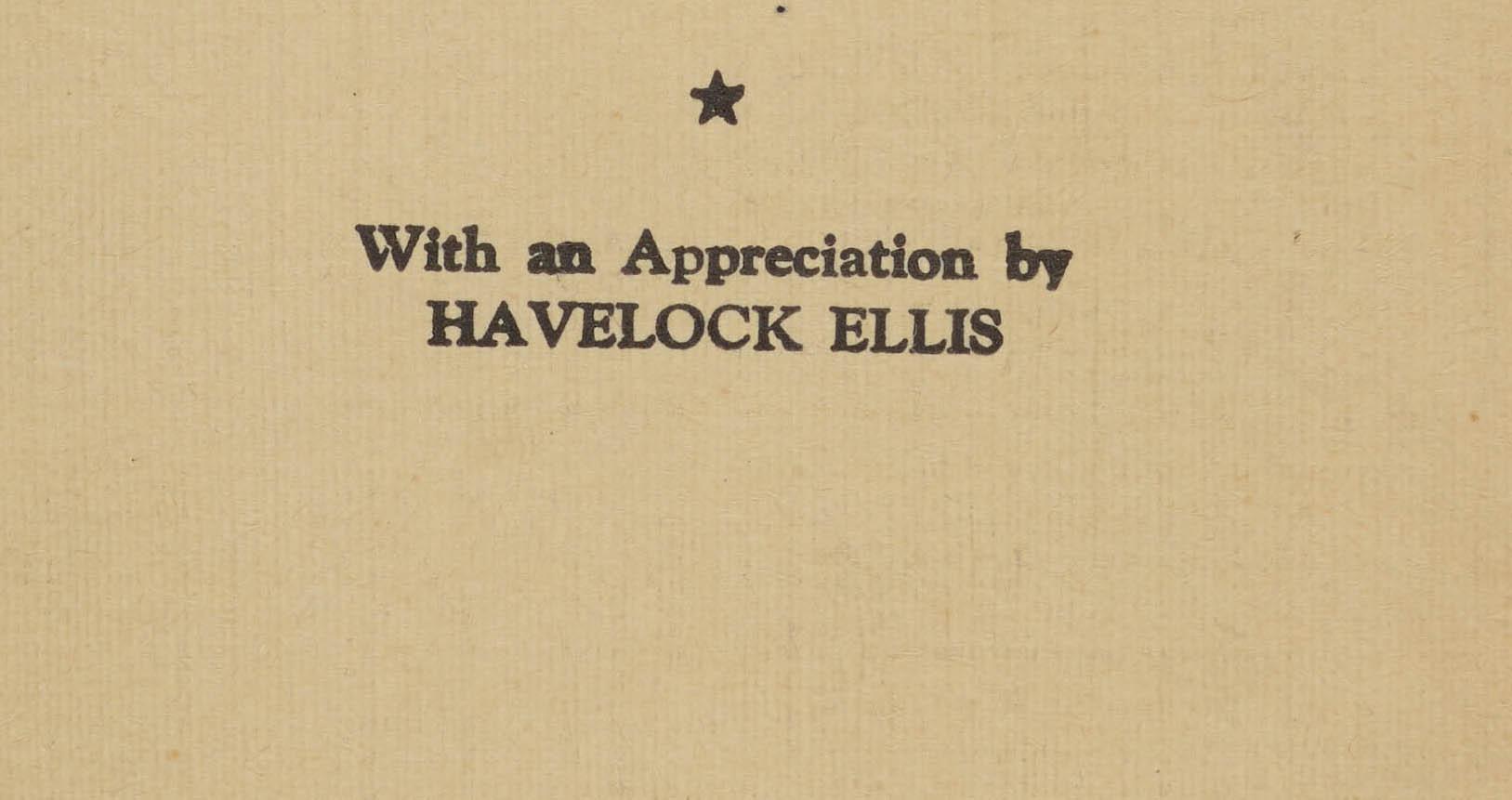
This edition of the Well of Loneliness includes an appreciation by Havelock Ellis, who co-wrote the first medical textbook in English on homosexuality.
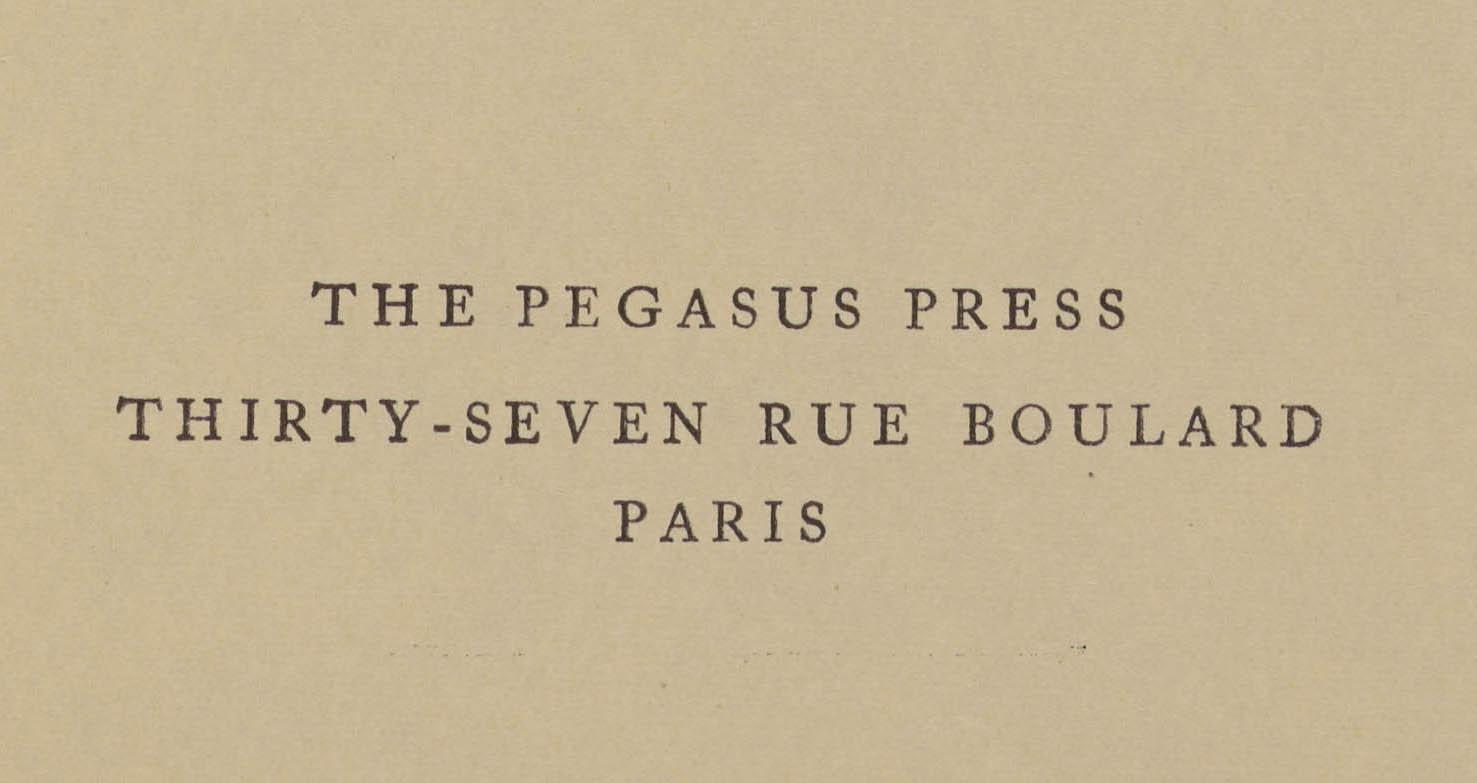
Due to a ban on the novel in the UK, the Pegasus Press re-issued the book in Paris. This book would then have been smuggled into Britain.
New College Library, Oxford, RS5299
Due to its subject matter, The Well of Loneliness rapidly gained notoriety upon publication, and caused a furore in government. Its publisher, Jonathan Cape, quickly withdrew the novel from sale after the chief magistrate, Sir Chartres Biron, ordered that all copies be destroyed—despite protests from literary figures such as John Buchan, Leonard Woolf, and Virginia Woolf herself. Partly as a result of her lower status in society, as well as her less impressive gifts as a writer, Radclyffe Hall’s novel did not enjoy the latitude extended to Virginia’s Orlando. As seen above, though, attempts to ban the novel only stimulated public interest in it. Hall, therefore, at least partially succeeded in her attempt in the novel to ‘speak on behalf of a misunderstood and misjudged minority’.
The topic of relationships that strayed away from societal norms was also explored in this period by the novelist L. P. Harley (1895–1972). In his most famous novel, he explored the huge amount of societal change throughout the twentieth century, in the form of a man in his sixties—Leo Colston—reminiscing on his younger self’s diary from fifty years earlier in 1900. Below, you can see the front cover illustration that was used for the first edition of this novel, dating from 1953.
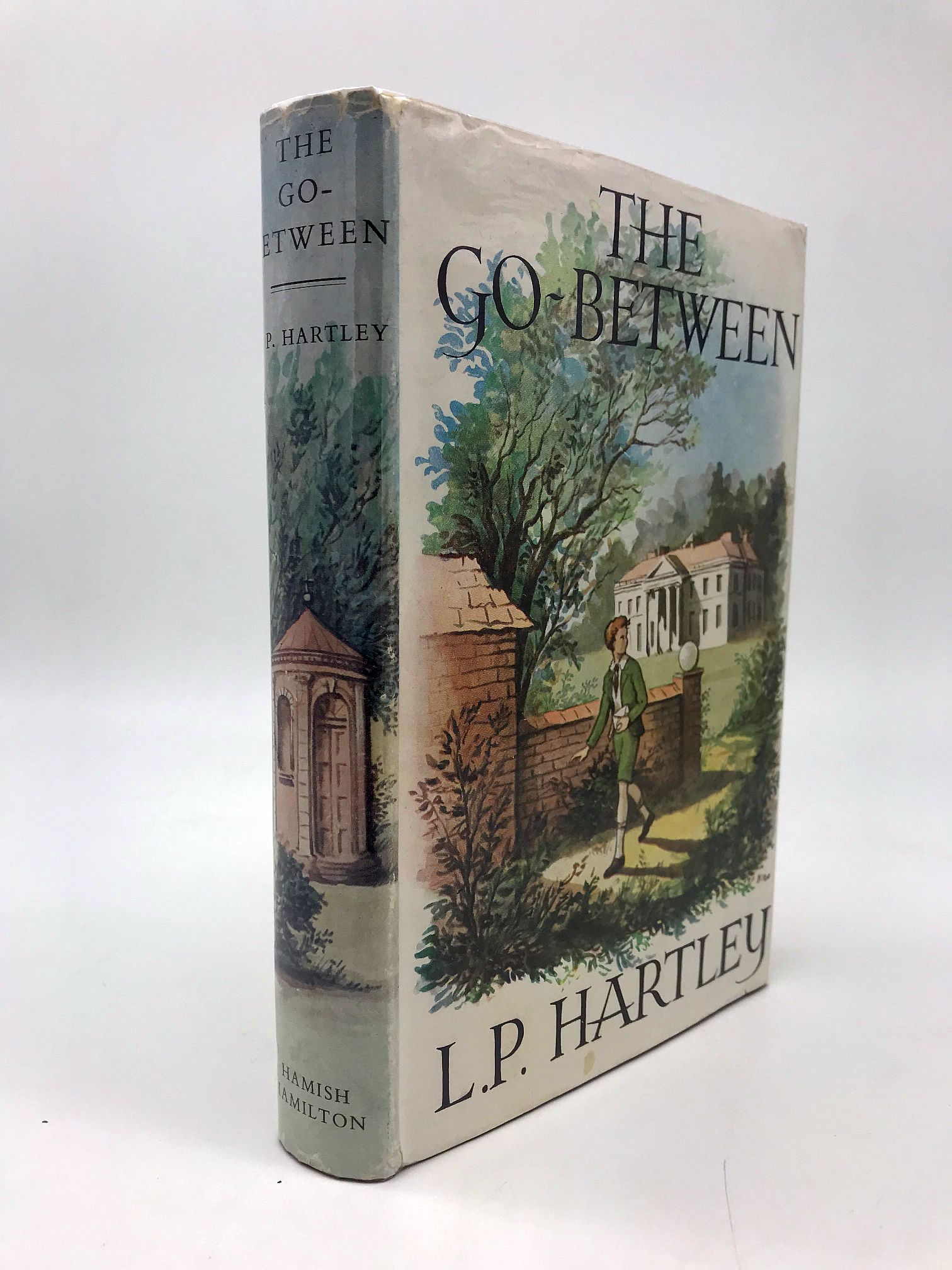
Hartley reflects on this change right from the first page, opening with the line ‘The past is a foreign country: they do things differently there’—arguably one of the most famous opening sentences of any novel in the English language. As the novel progresses, Hartley reflects on the dominance of social class and hierarchy in Edwardian Britain and changing ideas around masculinity and relationships. The relationship between Marian and Ted highlights how love was starting to transcend class, but the devastating end to their relationship reveals the prevailing strength of social conventions at the start of this period—conventions that would only be truly challenged in the latter half of the twentieth century.
In recent times, New College Library has acquired a notable collection of works by this influential author. Some of his key works in our collections are highlighted in the gallery above. There, you can see both a first edition and uncorrected proof of Hartley’s anti-utopian novel Facial Justice (1960) as well as a first edition of A Perfect Woman (1957)—a literary successor to The Go-Between and a novel that also focuses on class division and the conventions that discourage relationships between people of different social backgrounds.
The New College Library copy of this first edition is especially noteworthy, as it includes both an inscription by the author to Lady Diana Cooper, the wife of Sir Alfred Duff Cooper, as well as Duff Cooper’s intricate illustrated bookplate. This connection with Sir Alfred Duff Cooper also provides an association with New College itself, as Duff Cooper studied at New College. He was a noted bibliophile, and the Duff Cooper Prize was set up after his death. The prize is awarded to an outstanding work of non-fiction writing, and the Warden of New College serves as one of the five judges for this award.
The second half of the twentieth century has seen a notable increase in the number of authors with New College connections.
Indeed, many New College alumni have had an important influence in the world of literature. Naturally, New College Library has sought to collect the work of those associated with the college—and the Library now boasts a large and ever expanding New College Authors collection.
One key author to appear in this collection has to be John Fowles (1926–2005), who studied French and German at New College from 1947 to 1950. One of the greatest authors of recent times, he is, perhaps, best known as the author of The French Lieutenant's Woman. Published in 1969 and set in Lyme Regis, this novel enjoyed huge critical and commercial success, remaining on the New York Times bestseller list for over a year.
New College Library has amassed a significant collection of Fowles’s work—discover more about our collecting of Fowles material in this New College Note from 2023. Below, you can see our first edition copy of his debut novel of 1963, The Collector.
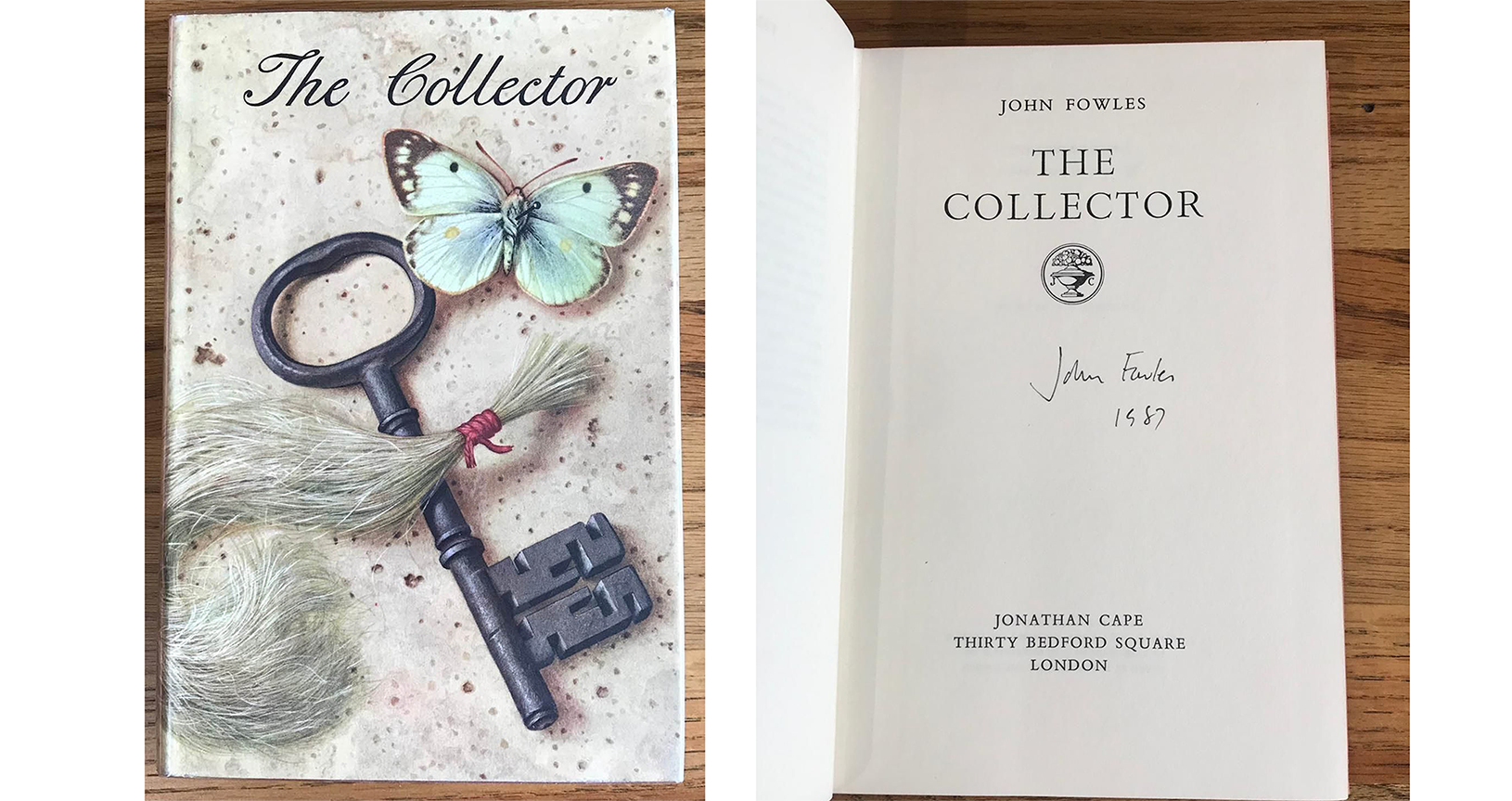
The innovative narrative of The Collector relates—from the point of view of both protagonists—how Frederick, city hall clerk and butterfly collector, kidnaps beautiful art student Miranda. Frederick’s aim is to add her to his ‘collection’ of pretty preserved objects hoping she, while held captive, will come to love him. The book instantly established Fowles as a major novelist on both sides of the Atlantic. Housed in a bespoke display case, our copy is signed by the author himself on the title-page. It also bears its original dustjacket designed by Tom Adams, who created the artwork for paperback editions of Agatha Christie novels.
Thanks to its popularity, fine press publishers have produced many special editions of Fowles’s work. Recently, the Library has been fortunate to obtain beautiful editions of The Collector and The Magus, published by Suntup Editions in California.
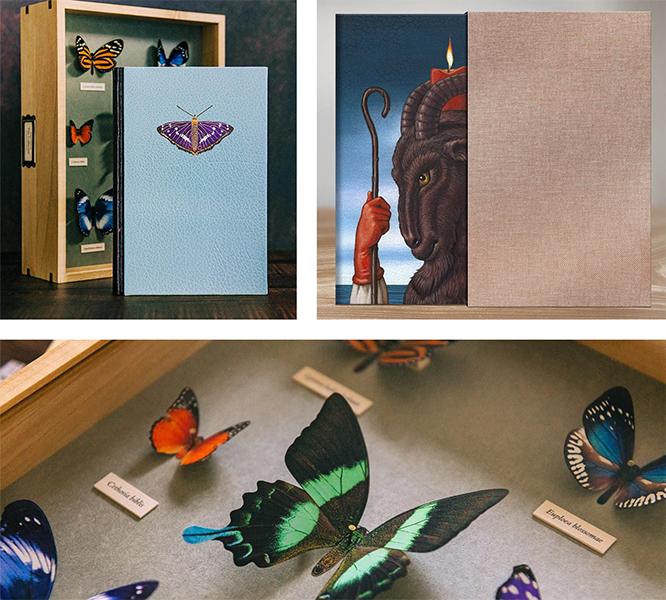
Top right: The numbered edition of The Magus New College Library, Oxford, NC/FOW
The exquisite copy of the Collector, pictured above, is part of a bespoke lettered edition, limited to 26 copies. It is printed on Mohwak Superfine and was produced partly in Somerset, partly in Massachusetts. Within a full-length bradel binding with amandine buffalo-covered boards, and blackberry goatskin spine, the book has hand-marbled, custom-designed endpapers. The highlight of this edition, though, has to be the handmade Tulipwood enclosure, which features a viewing panel in its lid displaying seven paper butterflies, resembling an entomological viewing case.
The other book pictured above is a numbered edition copy of The Magus, the second novel that Fowles published but actually the first one that he wrote. It recounts the story of a young Englishman, Nicholas Urfe, who befriends a reclusive millionaire whilst teaching on a remote Greek island. A psychological thriller like The Collector, it is perhaps the most enigmatic and magical novel in the Fowles canon. This edition features a full leather binding with leather wrapped endbands and six full-colour illustrations by Marc Burckhardt. It is limited to 750 copies. Together, these two editions are treasures for the library, showcasing the work of one of New College’s most famous authors.
The 1980s then saw the arrival of two students at New College, who would also become extremely successful authors after graduation—Patrick Gale (b. 1962) and Kate Mosse (b. 1961). A hugely popular and prolific author, Patrick Gale has published over twenty works of fiction since his debut in the mid-1980s. Openly gay and educated at Winchester College before New College, Gale reflects extensively on his upbringing, education, and sexuality in his books. Two highlights are shown in the gallery below:
The first book displayed above is the New College Library copy of Friendly Fire, first published in 2005. It follows the youth of the protagonist Sophie, an orphan in love with learning who attends an esteemed boarding school (based on Winchester College). Befriending two gay teenage boys, she experiences the first ache of futile love, then must deal with the consequences of a teacher taking an inappropriate interest in one of the trio. A novel about class, sex, and families, it is deeply rooted in Gale’s personal experience. The text in this edition is then beautifully enhanced with a series of illustrations by Gale’s own husband Aidan Hicks, which depict the school. You can see an example of one above, reminiscent of the architecture of New College.
The second book is Gale’s novel, Mother’s Boy, published in 2022. In this work, Gale focuses on the youth of one of his most admired poets—Charles Causley (1917–2003). Its title refers to Causley’s close relationship with his mother Laura. Laura had raised him singlehandedly in Launceston, Cornwall, after his father died from the effects of German gas when Causley was seven. As the plot continues, the novel depicts the poet’s adolescence and young adult life, inventing a clandestine love experienced by Causley whilst he served in the navy during the Second World War. The New College Library copy is part of an edition to be sold exclusively in independent bookshops, and it is signed by the author.
In recent years, the Library has been fortunate to receive several books by Kate Mosse. She is one of New College’s most successful authors, she founded the Women’s Prize for Fiction and the Women’s Prize for Non-Fiction, and in 2024 was awarded a CBE for services to literature, to women, and to charity. A novelist, short-story writer, and playwright, as well as a writer of non-fiction, Kate Mosse studied English at New College in the 1980s. After graduation, she worked in the publishing industry before turning to writing.
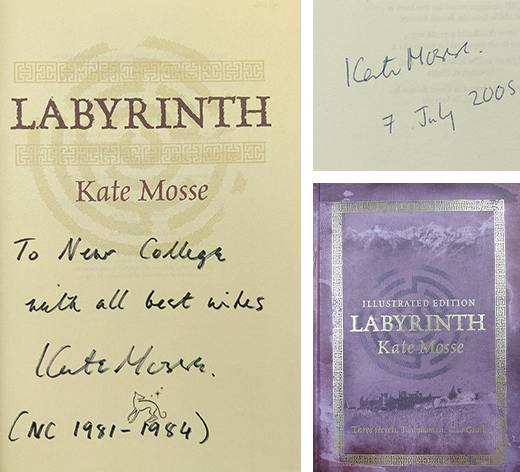
Top right: the inscription by Kate Mosse in the first edition copy of Labyrinth New College Library, Oxford, NC/MOS
In 2005, Mosse released the novel Labyrinth, which quickly became an international success. A number one bestseller, it has sold millions of copies, winning numerous awards. The novel is the first part of what would become a trilogy, and is an archaeological mystery, set in France in both the Middle Ages and the present day. The first storyline takes place in 1209, whilst the latter takes place in 2005—but both parts are intertwined by their shared geography. New College Library is fortunate to have both a first edition of this important novel and an early illustrated edition, dating from 2006. Both were donated to the Library and signed by the author, with Kate writing a longer inscription in the illustrated edition (see above).
In 2023, Mosse published The Ghost Ship, depicted below, which New College Library quickly purchased for our collections. Like Patrick Gale’s Mother’s Boy (see above), this book is also a bespoke edition, just for independent bookshops. In the picture below, you can see both the front cover of the book and its half title page, also signed by the author in gold ink. Again a historical novel, Ghost Ship is the final installment of the Joubert Family Chronicles. The ghost ship of the title is a ship captained by Louise Reydon-Joubert, who defies gender roles to lead a crew that hunts pirates and frees their enslaved captives. A truly global adventure, it is set in the Barbary Coast in 1621, with chapters also taking place in France, Amsterdam, and the Canary Islands. The signed copy of the book pictured below is kept pristinely in the Library’s New College alumni sequence, but another copy has been purchased for our literature section, to enable as many students as possible to read it for pleasure. In total, the library now holds twenty-four books written by this influential author—a collection that will no doubt continue to grow in the future.
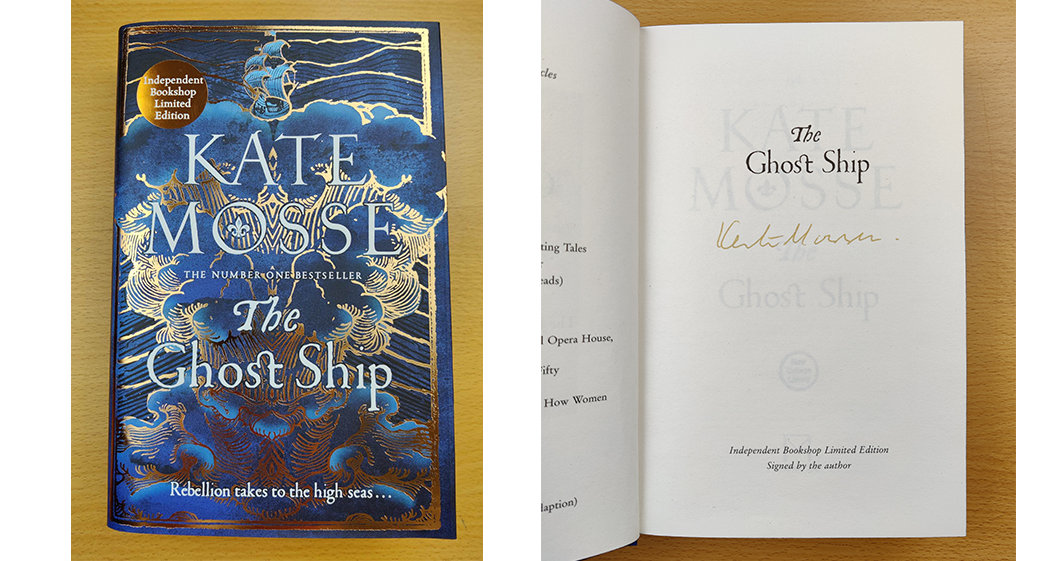
Recent New College alumni have also been active in the world of poetry. One of the most extraordinary is alumna Alice Oswald (b. 1966), who became the Oxford Professor of Poetry in 2019, the forty-sixth poet to take up the post, and the first woman ever to do so. A very successful writer, her work has been widely acclaimed—in 2022 she was awarded the prestigious T. S. Eliot Prize for her book-length poem Dart. All of Alice Oswald’s poetry, though, is interesting not only in terms of its content, but also bibliographically. When it comes to the art of the physical book, publications by her are very special, due to the collaborations she has sought with visual artists, musicians, fine press publishers, and other artists and creatives. Many of these publications have been acquired by New College Library in recent years, with a section displayed in the gallery below.
Above, you can see a copy of the poem Nobody. A collage of water stories, Alice Oswald reconstructs the Odyssey in this work as a mesmeric and hallucinatory book-length poem—vividly describing the sea and its impact on the human senses. Published in 2019, the New College Library copy of this poem is a fine limited edition in a Perspex case—note the intricately decorated endpapers in the gallery above. Signed by the author, this copy is number 57 of only 100 copies published.
The second item in the gallery in a revised and expanded edition of Oswald’s poem Moth, first published in 2020. Beautifully illustrated, it is a collaboration with the artist Sarah Gillespie. In total, the book contains Gillespie’s mezzotint studies of twenty-one British moths, and is signed by her. To produce this book, Oswald worked with the gifted designer and typesetter Kevin Mount and his Letter Press—a fine press based in Devon, where the poet now has her home.
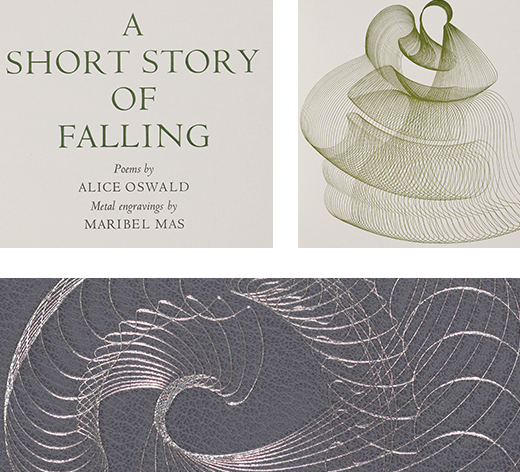
Bottom: A metal engraving on the front cover [enlarged] All New College Library, Oxford, NC/OSW
The final Alice Oswald book you can see above is a copy of her eight-poem A Short Story of Falling, complemented by eight metal engravings by Venezuelan-born artist Maribel Mas, published by the fine press poetry publisher Andrew J. Moorhouse, based in Rochdale. One of only eight numbered copies, this book is—again—a tremendous work of art.
Together, these three items provide an exquisite presentation for the poetry of Alice Oswald, who was made an Honorary Fellow of New College in 2019. Today, the library holds forty items authored by her, including rare and unusual publications—one of the largest and finest collections of her work in the country.
This exhibition has taken us on a long journey.
We have travelled both chronologically and geographically, starting in fourteenth-century Kent and ending in twenty-first century Yorkshire. What this exhibition really highlights, though, is the truly astounding diversity of the collections held at New College Library—with important works in the Library’s collections from almost all the major periods of English Literature. Medieval manuscripts of Gower and Chaucer, early folios of Shakespeare, and Jane Austen and Thomas Hardy first editions: all these items are unique and many attract the attention of scholars the world over, as well as the attention of visitors to our physical and online exhibitions.
The books discussed in this exhibition, though, are not only interesting due to the words they contain on their pages. As we have seen, this selection of items is bibliographically noteworthy in its own right, reflecting how book production changed over the centuries and how, in turn, this changing technology influenced literary output. Manuscript production gave way to the printing press, which was, in turn, turbo-charged during the industrial revolution. Even in recent years, this process has not stopped, with the Library now utilising the technological developments of the twenty-first century to digitise and share our collections with a global audience, including in this online exhibition.
Whether you have read the entirety of the exhibition or just focused on your favourite author or time period, we do hope you have enjoyed discovering more about the collections at New College Library, Oxford.

